In March 2024, the U.S. economy added an estimated 303,000 jobs, above the average monthly gain of 231,000 over the prior 12 months. At the same time, the unemployment rate fell to 3.8% from 3.9% the month before, which is still a 0.3-point rise compared to March last year.
While the national unemployment rate remains historically low, notable state variations exist. For example, one year ago, Washington held the ninth position with a 3.89% unemployment rate. Since then, its rate has jumped to 4.82%, placing the state fourth currently.
In response to these fluctuations, the team at TradingPedia decided to take a closer look at the latest U.S. Bureau of Labor Statistics unemployment data. We identified the states with the highest and lowest jobless rates and the parts of the country that have made significant progress or experienced notable rate changes between March 2023 and March 2024.
To better represent the data, we created a map illustrating the unemployed population as a percentage of the civilian labor force across every U.S. state.
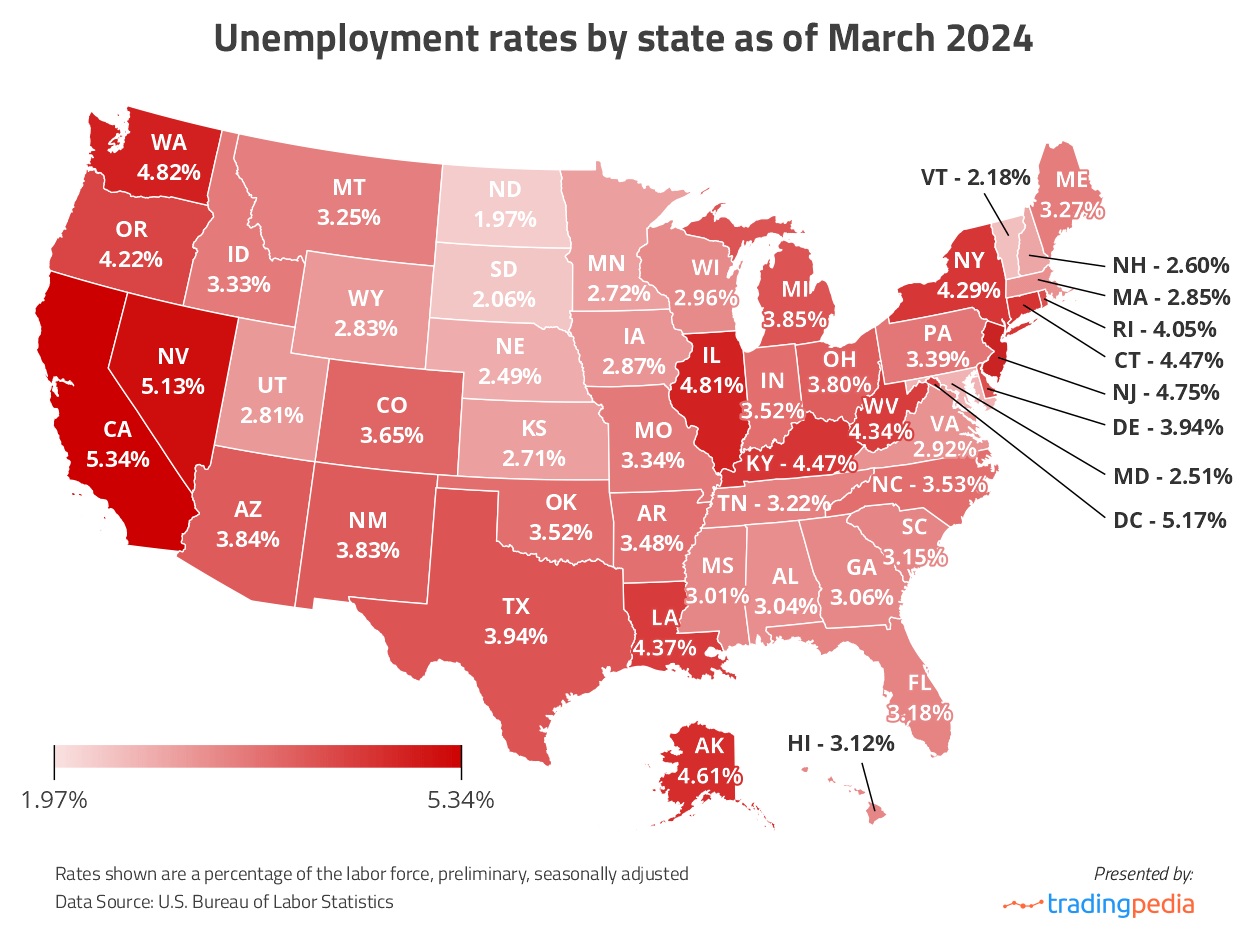
The number of unemployed individuals totaled 6.4 million, up from 5.8 million a year earlier but lower than February’s 6.5 million people who had no job. Job gains, however, remained solid despite high interest rates and elevated inflation, defying economists’ expectations. The U.S. labor market has added jobs for 39 consecutive months, marking the fifth-longest period of job expansion on record.
Compared to the same time last year, the labor force participation rate (the number of people in the labor force as a percentage of the civilian noninstitutional population) has gone up by just 0.1% – 62.7% up from 62.6%. The employment-population ratio (the number of people currently employed as a percentage of the total working-age population) also showed little change at 60.3%.
Job Growth by Industry Sector
Over the year, positive employment trends were observed in various industry sectors across the United States.
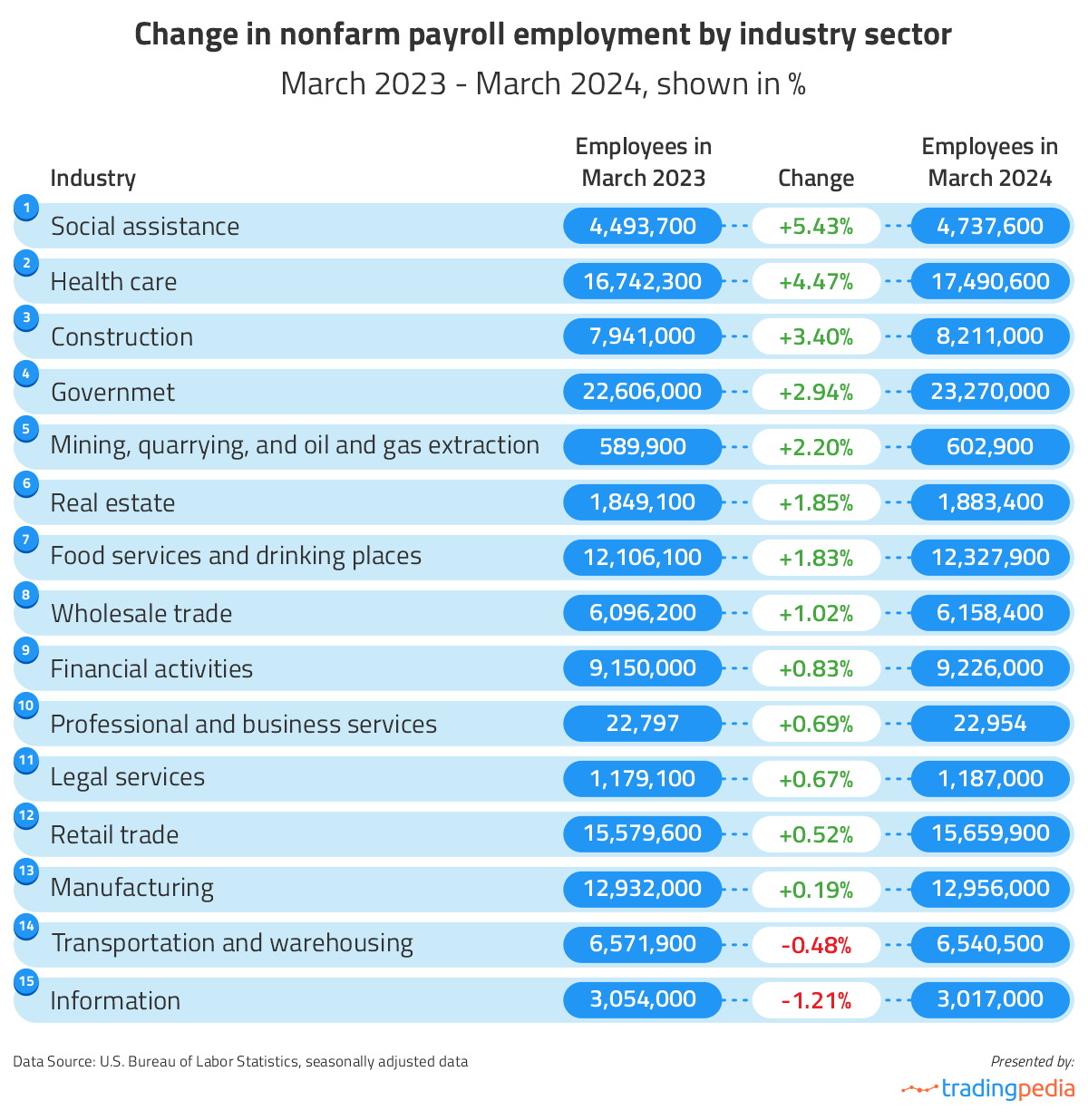
Regarding job gains over the past twelve months on a state level, Texas led the pack with over 270,700 jobs added, followed by California with 217,700 and Florida with 211,100.
State Unemployment Rate Variations
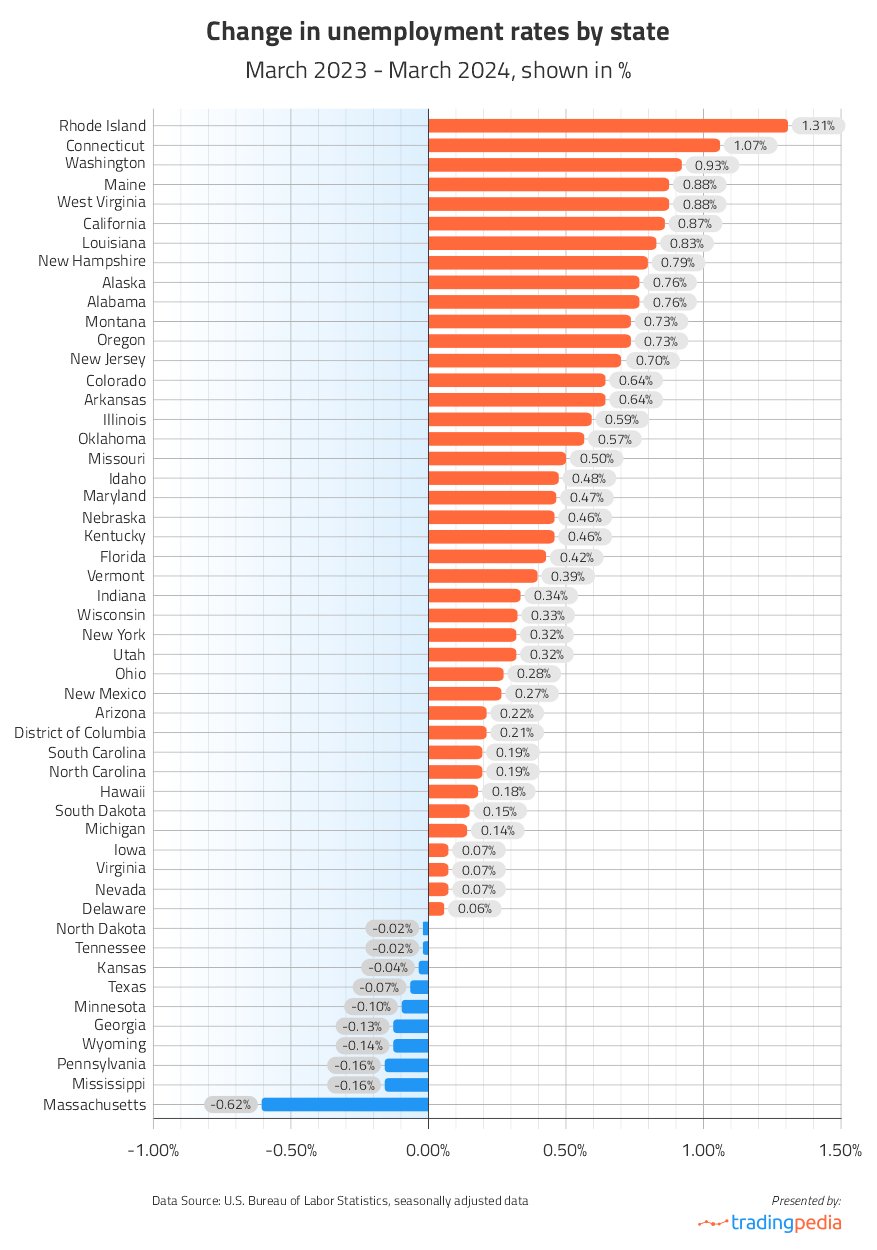
While the national unemployment rate is considered to be at a level that’s healthy for the economy (it has been below 4% for 26 months in a row, the longest streak since the late 1960s), there are significant state-by-state variations. The state unemployment rates indicate how different parts of the U.S. are affected by factors such as aggregate demand, global competition, education, automation, and demographics.
Over the year, 41 states and the District of Columbia saw increased unemployment rates, whereas only nine witnessed decreases.
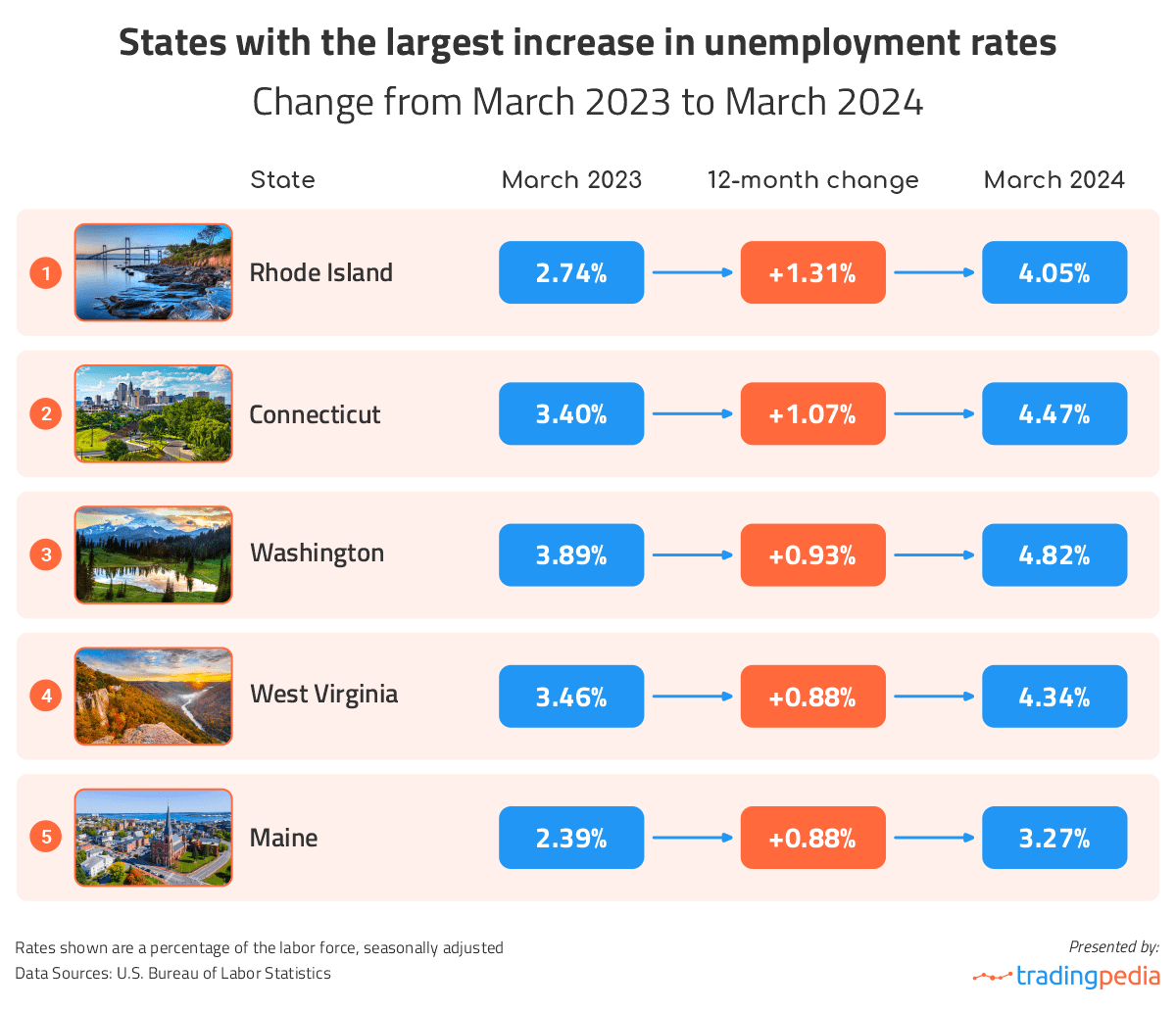
Rhode Island experienced the most significant year-over-year increase in its unemployment rate. Last March, it ranked fortieth, with 2.74% of its labor force unemployed. Currently, the state holds the fourteenth position, with an unemployment rate of 4.05%, marking a notable 1.31% rise over the past twelve months.
Connecticut reported the second-largest rate jump from March 2023 (1.07%), closely followed by Washington (0.93%). West Virginia and Maine both saw 0.88% increase in unemployment.
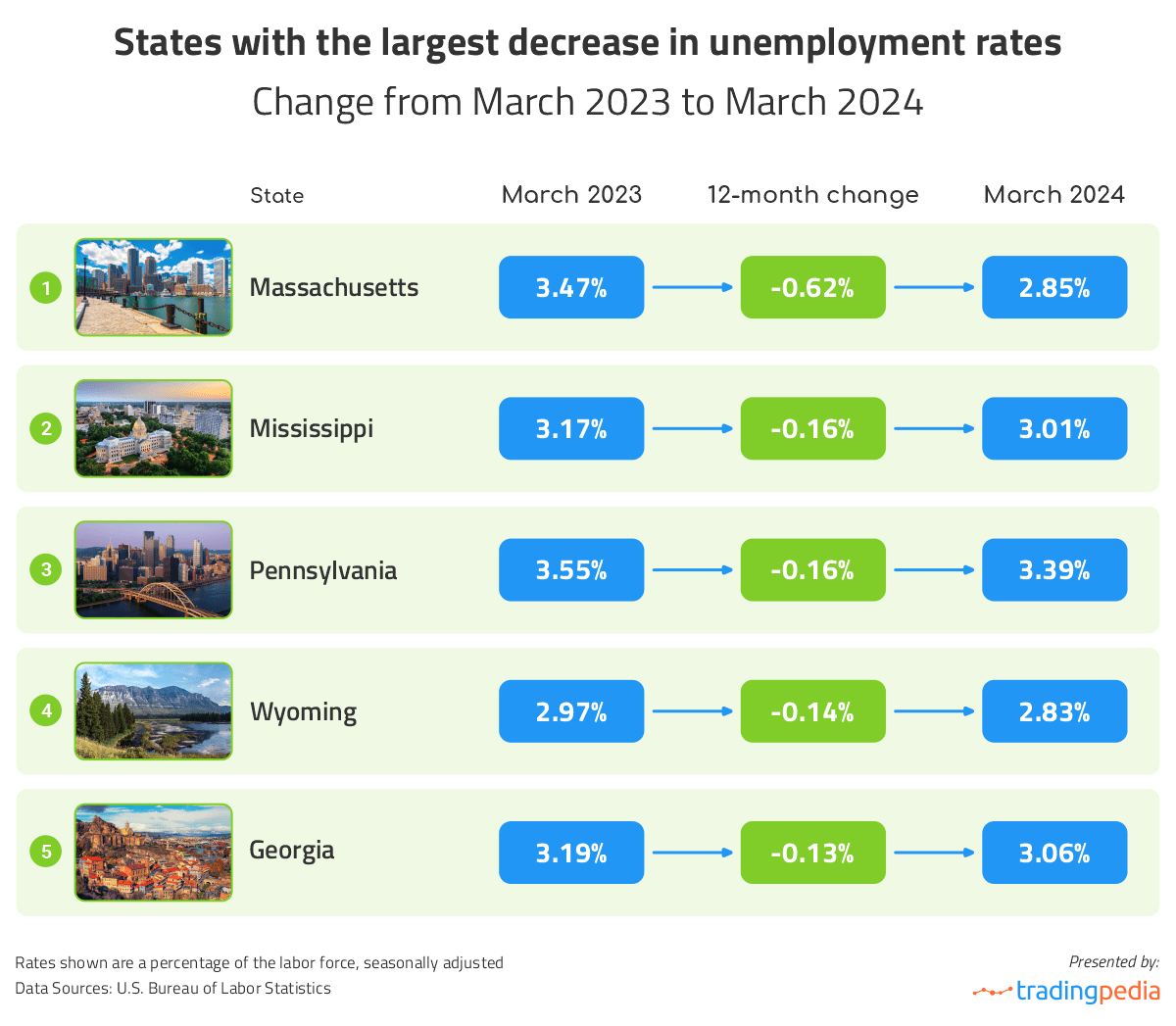
At the other end of the spectrum, ten states witnessed a slowing in unemployment rates, most notably Massachusetts (-0.62%). A year ago, it was the nineteenth most jobless state with a rate of 3.47%. At the time of the current study, we found Massachusetts sitting near the bottom of the list, with only 2.85% of its civil labor force being jobless. This is a 0.62% decrease, the most positive change of all states.
Mississippi and Pennsylvania also recorded significant unemployment rate drops compared to the same time last year (-0.16%), followed by Wyoming (-0.14%) and Georgia (-0.13%).
In March 2024, Mississippi’s unemployment rate reached a historic low of 3.01%, as reported by the U.S. Bureau of Labor Statistics.
States Leading the Nation in Unemployment
Over the year, California’s unemployment rate has climbed from 4.47% to 5.34% and is now the highest in the country, surpassing last March’s leader.
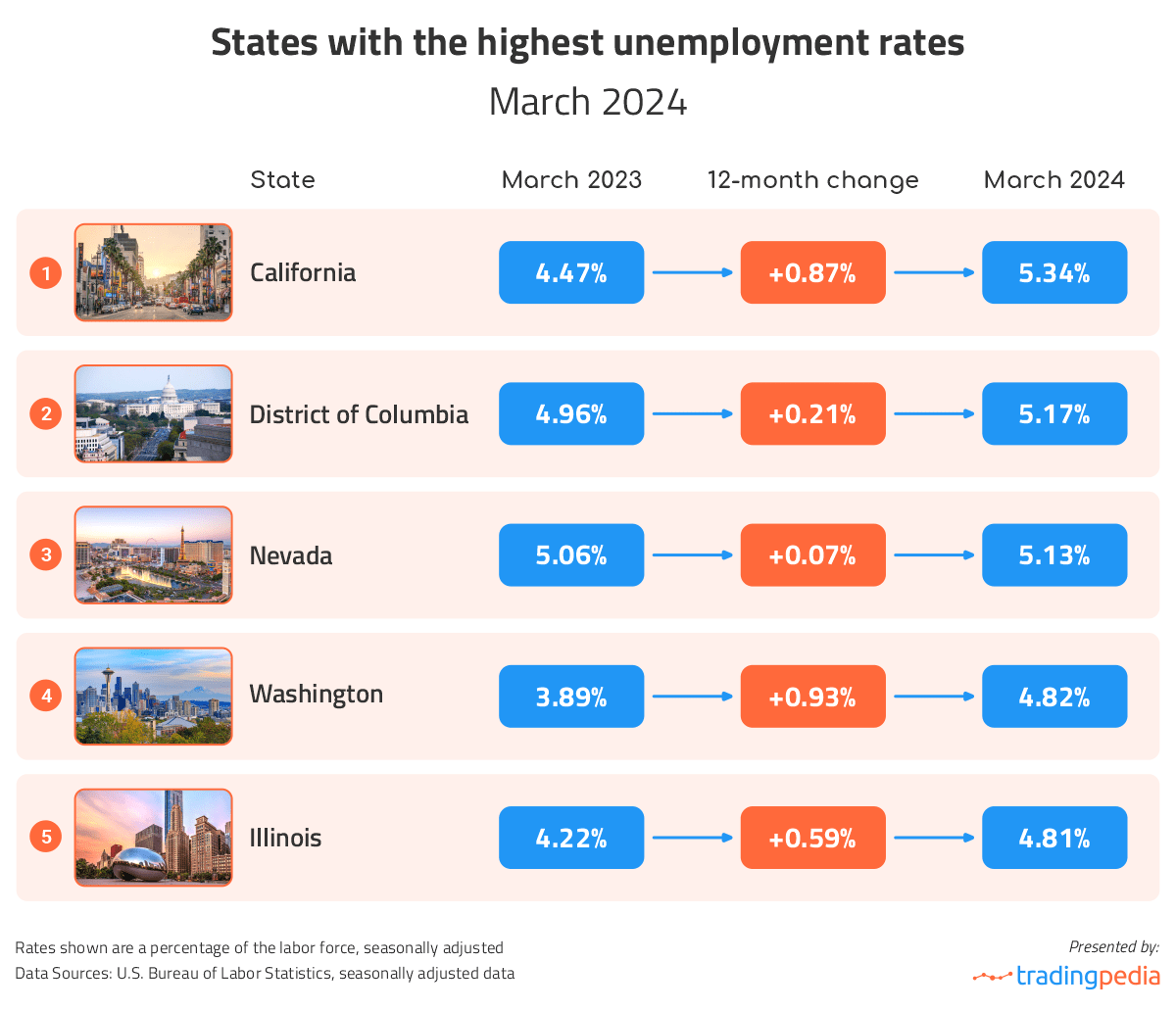
In March 2023, Nevada held the highest seasonally adjusted jobless rate, at 5.06%. During the past 12 months, its rate has gone up by only 0.06% – 5.13% up from 5.06%, placing the state third on the current ranking.
The District of Columbia remained in the second position, just as 12 months ago, even though its unemployment rate has moved up to 5.17% from 4.96% during the study period.
Washington, which stood ninth in March 2023, featuring a 3.89% unemployment rate, rose closer to the top this month, recording a 0.93% year-over-year increase. This March, the state landed in fourth position with 4.82% of its labor force being jobless.
Illinois wraps up the top five with an unemployment rate shifting up from 4.22% to 4.81% during the last 12 months.
States Boasting Highest Rates of Employed Labor Force
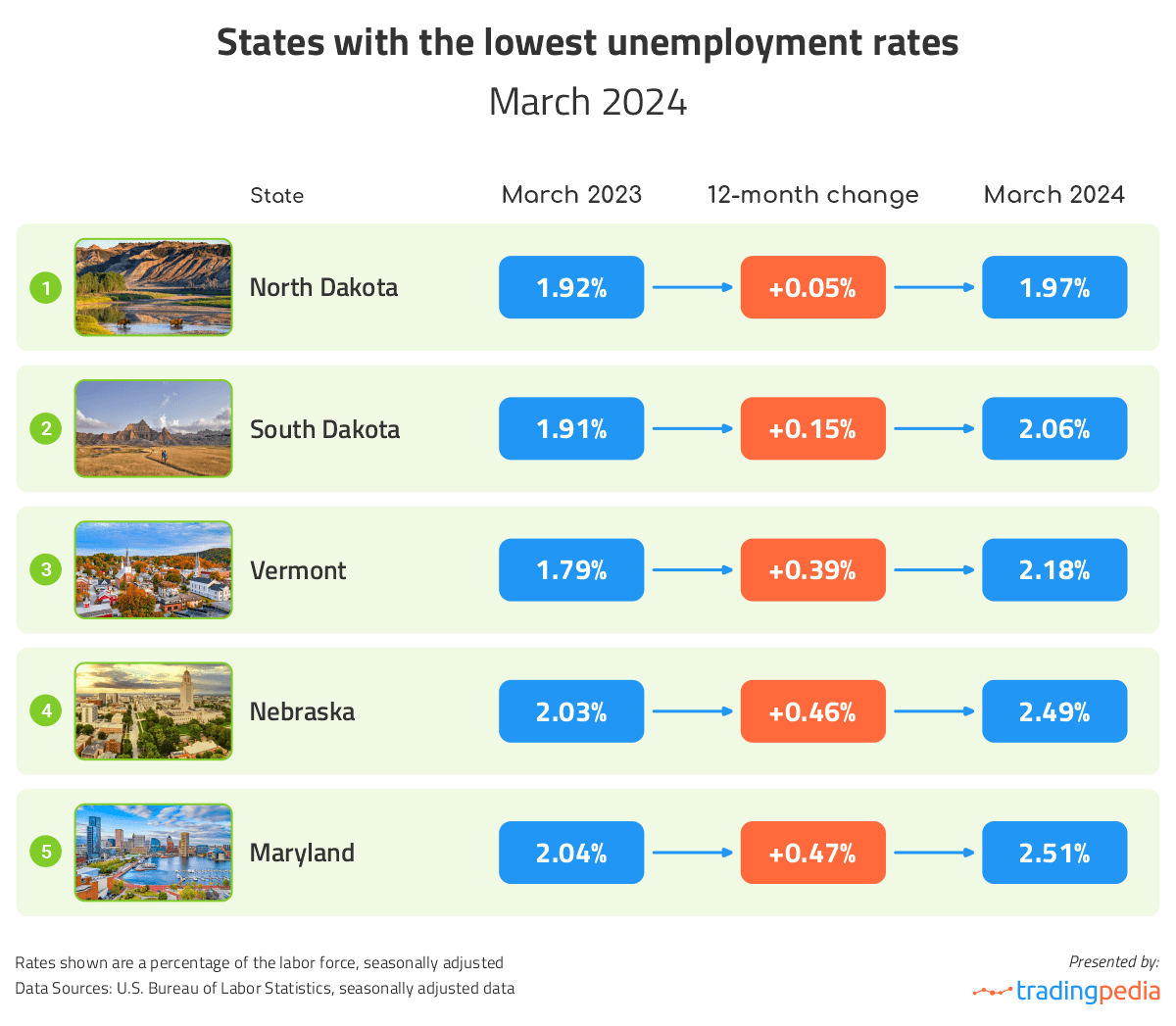
In March 2023, Vermont had the lowest unemployment rate among all states, with jobless individuals accounting for only 1.79% of the labor force. However, its unemployment has jumped to 2.18% since then, positioning the state forty-ninth at the time of writing,
This March, North Dakota stood with the lowest unemployment rate in the country, at 1.97%. This marks a slight improvement from the same time a year ago when the rate was 1.92%.
The second-lowest rate was reported in South Dakota, at 2.06%. Nebraska was also among the states with the strongest job market with an unemployment rate of just 2.49%. Maryland’s jobless rate was the fifth-lowest in the country, at 2.51%.
Methodology
The civilian labor force encompasses all not-institutionalized civilians aged 16 and older, either employed or unemployed. The unemployment rate measures what percentage of the labor force is out of work. It is calculated by dividing the number of unemployed individuals in a state by its total labor force. A person who has not actively sought work for at least four weeks is no longer considered part of the labor force.
The rates shown in this report are seasonally adjusted, which means that seasonal factors such as holiday periods and weather events, affecting employment, are removed. The main study period spans from March 2023 to March 2024. Note that all data for March 2024 is preliminary and will be revised when new information becomes available.

